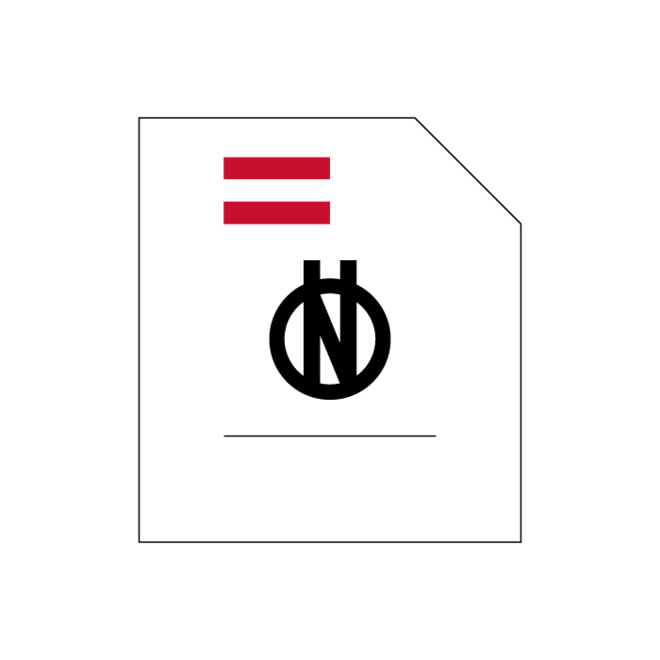Jetzt anpassen und kaufen
286,66 €
exkl. USt.
Konfigurieren


Technische Regel
ONR CEN ISO/TS 16407-1
Ausgabedatum: 2012 06 01
Electronic fee collection - Evaluation of equipment for conformity to ISO/TS 17575-1 - Part 1: Test suite structure and test purposes (ISO/TS 16407-1:2011)
This part of ISO/TS 16407 specifies the test suite structure (TSS) and test purposes (TP) to evaluate the conformity of Front End and Back End to ISO/TS 17575-1.
The ...
Weiterlesen
ZURÜCKGEZOGEN
: 2018 02 16
Herausgeber:
Austrian Standards International
Format:
Digital | 111 Seiten
Sprache:
Englisch
Aktuell Gültig:
Standards mitgestalten:
This part of ISO/TS 16407 specifies the test suite structure (TSS) and test purposes (TP) to evaluate the conformity of Front End and Back End to ISO/TS 17575-1.
The objective of this part of ISO/TS 16407 is to provide a basis for conformance tests for the Front End and the Back End in electronic fee collection (EFC) based on autonomous on-board equipment (OBE) to enable interoperability between different equipment supplied by different manufacturers.
Autonomous OBE operates without relying on dedicated road-side infrastructure by employing wide-area technologies such as global navigation satellite systems (GNSS) and cellular communications networks (CN). These EFC systems are referred to by a variety of names. Besides the terms autonomous systems and GNSS/CN systems, also the terms GPS/GSM systems and wide-area charging systems are in use.
Autonomous systems use satellite positioning, often combined with additional sensor technologies such as gyroscopes, odometers, and accelerometers, to localise the vehicle and to find its position on a map containing the charged geographic objects, such as charged roads or charged areas. From the charged objects, the vehicle characteristics, the time of day and other data that are relevant for describing road use, the tariff and ultimately the road usage fee is determined. The testing of the following behaviours and functionalities is outside of the scope of this part of ISO/TS 16407:
- dynamic behaviour, i.e. sequence of messages and triggering events that must be exchanged/happen to fulfil certain charging scenarios;
- profiles and business logic built on top of particular pricing schemas;
- authentication, as its handling is not described in ISO/TS 17575-1;
- account update procedure ("reload" and "add to account") with respect to time and duration based on on-board accounts, as run-time environment has significant impact on test purpose outcome.
ÖNORM EN ISO 16407-1
2018 02 15
Electronic fee collection - Evaluation of equipment for conformity to ISO 17575-1 - Part 1: Test sui...
Norm
ONR CEN ISO/TS 16407-1
2012 06 01
Electronic fee collection - Evaluation of equipment for conformity to ISO/TS 17575-1 - Part 1: Test ...
Technische Regel
↖
ONR CEN ISO/TS 16407-1
2011 06 01
Electronic fee collection - Evaluation of equipment for conformity to ISO/TS 17575-1 - Part 1: Test ...
Technische Regel Entwurf
Norm
ISO/IEC 9646-6:1994
Ausgabedatum :
1994 12 22
Information technology — Open Systems Interconnection — Conformance testing methodology and framework — Part 6: Protocol profile test specification
Technische Regel
ISO/TS 17575-1:2010
Ausgabedatum :
2010 06 10
Electronic fee collection — Application interface definition for autonomous systems — Part 1: Charging
Norm
ISO/IEC 9646-6:1994
Ausgabedatum :
1994 12 22
Information technology — Open Systems Interconnection — Conformance testing methodology and framework — Part 6: Protocol profile test specification
Technische Regel
ISO/TS 17575-1:2010
Ausgabedatum :
2010 06 10
Electronic fee collection — Application interface definition for autonomous systems — Part 1: Charging
Norm
ÖNORM EN ISO 16407-1
Ausgabedatum :
2018 02 15
Electronic fee collection - Evaluation of equipment for conformity to ISO 17575-1 - Part 1: Test suite structure and test purposes (ISO 16407-1:2017)
